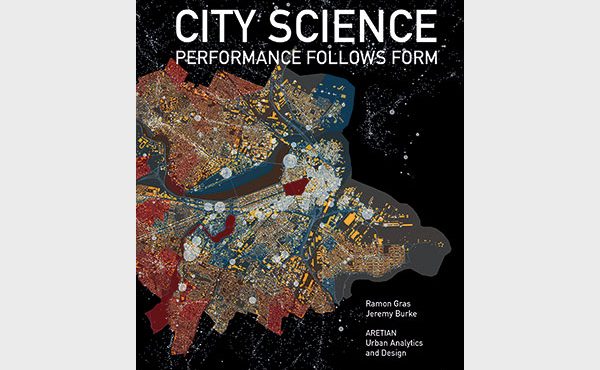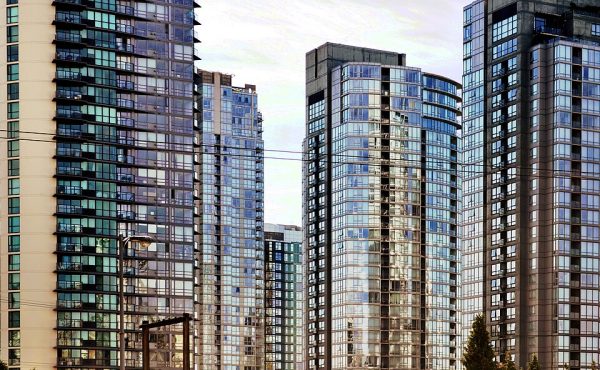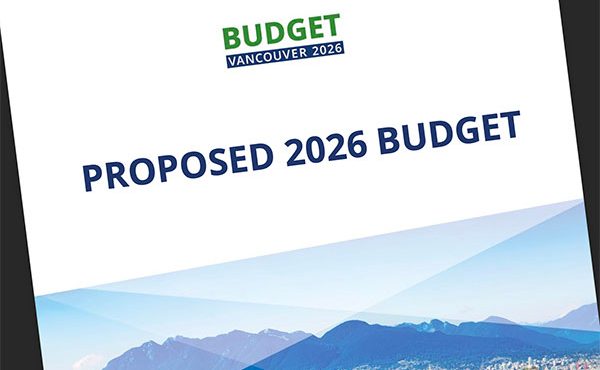

[Ed: A video montage of the lanes is also available -bg]
Several bike lane related reports and surveys will hit council on Thursday, providing statistics galore. Some, like the June-to-June midweek ridership increases of 50% on Dunsmuir, show clear benefits. Others, like the economic impact study results, rely on merchants’ anecdotal reports to estimate a 4% decrease in sales – meanwhile, vacancy rates on Hornby are down from last year’s 12% to 2%. The positive results are recognized not only by cyclists but by area visitors as well, with support for the Hornby lanes up to 64%.
Numbers aren’t required to see that the lanes are increasing ridership by making cyclists feel safe – that takes only a bike ride to find out. Unfortunately, those among the entrenched 28% opposition are also least likely to take this opportunity. If they did, they’d find an easy and protected False Creek crossing on the Burrard Bridge tying into the Hornby lanes and a quick and seamless route from quiet streets on Union and Adanac, over the Dunsmuir Viaduct, and into the heart of downtown. They’d also find plenty of other Vancouverites to keep them company.

While the Hornby lanes don’t yet have a year under their belt, they’re keeping pace with Dunsmuir and may even be catching up; total trips on Hornby grew from 60% of Dunsmuir levels in January to 80% as many in June.
Although it’s early, promised safety improvements also seem to be materializing, with an 80% decrease in sidewalk riding along Hornby (to less than a percent) and July-March collisions on Dunsmuir down 18% from the average of the previous six years. Meanwhile, women riders are up slightly versus the previous painted lanes, making up one in three cyclists on Hornby. Children, though still a tiny fraction of riders, are now four times more prevalent; improved connections – to the West End and the Burrard Inlet seawall, for example – would help on this count.
While the Dunsmuir lanes connect relatively well to Beatty, Richards, Homer, and – of course – Hornby, the Hornby lanes suffer from a lack of easy east-west connections. Direct connections like Pacific, Nelson, and Smithe are heavily automobile dominated, while Robson and Davie aren’t much more comfortable for most. The confusing one-way separated connection between Burrard and Hornby at Drake seems to be used just as much, if not more, in the “wrong” direction as a result, and the failure to properly bridge the one block gap between Burrard and Hornby to the quiet West End street grid (at Smithe, for example) was a huge missed opportunity.

While the Hornby lanes also have yet to receive green paint like on Dunsmuir, they do have several crossings with separate phases for cyclists and right-turning drivers. Unfortunately, like the right turn bans at Helmcken, Seymour, and Hornby, the right-on-red prohibitions are also all-too-commonly violated, creating dangerous and unpredictable crossings for cyclists.
Enforcement against scofflaws, both drivers and cyclists, along Dunsmuir and Hornby would be welcome to set a new tone, given the danger posed by these right turns and the lack of justification for poor cycling behaviour. Anecdotally, red-light running, like sidewalk-riding, appears to be down significantly already.
Signal timings along Dunsmuir and Hornby would also benefit from an adjustment, given that they are still timed for free-flow, one-way automobile traffic. While it is technically possible to hit green lights from the Dunsmuir viaduct to Burrard Street on a bike, traveling against the automobile-grain means hitting every red on Hornby and every second red on Dunsmuir. While it would seem that drivers benefit, during peak hours congestion on these streets rarely allows those free-flow speeds, bike lanes or not.
Either way, support among drivers for the Hornby lanes is up, from 35% to 44%, and they use the street as much as they ever did. Rather than the five to fifteen minutes delay expected – and still believed – by some drivers, peak period travel time is up only 30 seconds. Fewer on-street parking spaces has meant a shift to the ten thousand plus off-street parking spaces city staff identified prior to implementation, as parkade use increased from 49% to 64%. Drivers are also parking about a half block closer to their destination.

As for the importance of drivers to business, one of the most interesting results comes from comparing the surveys of visitors and merchants on customers’ modes of travel. While Hornby merchants estimated two in five customers arrive by car, the survey of Hornby customers paints a dramatically different picture, with three times as many cyclists, twice as many transit riders, and only half as many drivers patronizing the street as merchants believe. This mirrors results of similar surveys in Bristol, UK, and Graz, Austria, showing a seemingly universal predilection among shopkeepers to over-estimate how critical automobile traffic is to their business.
The results in other sections, then, are all the less surprising, since the economic impact analysis asked and trusted merchants to estimate the numbers themselves. After six contact attempts, the response rate was still only 32%, and actual proof of any economic misfortune was only furnished by four of the fifteen businesses asked – and, while the “estimated loss in sales was not as high as reported in the surveys, the responses by businesses have been taken at their word.”

Eleven businesses along Dunsmuir claimed an average of -2% since 2010 and a paltry three “control” businesses along Georgia averaged +2% to get the -4% number cited. Although the Hornby results had a larger sample, the -4% impact in the survey results (page 33) mysteriously turned into -10% when it was inserted in the report (page 5). Howe was its control, notable for gaining parking spaces lost by Hornby when the trolleys returned to Granville. In the next question, respondents broke down the impact by category. The numbers for Hornby added up to a whopping -31% rather than -4%, going well beyond attribution bias to the point that the survey might as well have been an opinion survey.
Finally, the oft-quoted “$2.4 million in lost sales,” is actually give-or-take $1.0 million, is sales not profits (estimated at one fifth of sales), and is merely the average of two worse estimates: one assuming everyone was impacted as much as the 32% who responded claimed to be, and another assuming that only the responding businesses were impacted at all. The impact “is relatively modest based on industry standards” and “is expected to become less … over the next few years.”
All together, this is hardly the catastrophe that vocal opponents have repeatedly claimed for business – and there’s the rub. Rather than laying out the welcome mat for cyclists, many have been spending their time expressing just how unwanted their patronage is. As ridership continues to increase, this could prove to be just as destructive a strategy as exaggerating the impacts on – and importance of – drivers.
***
Brian Gould is a transportation planner, urbanist, advocate, and recent graduate of the Master of City Planning program at UC Berkeley.




11 comments
Great analysis. Thanks so much for doing this. Overall, it looks like bike lanes are a great benefit to cyclists and essentially neutral for motorists and business. Was there anything in the reports about positive impact on pedestrians? I suspect that it won’t take long for everyone to benefit from these bike lanes and that soon businesses will beg the city to put separated bike lanes on their street.
Thank you for publishing a thoughtful piece on this set of reports. Much appreciated.
There isn’t very much on pedestrians. There may have been a very slight decrease in walking among area visitors, but it may be noise. Safety information isn’t developed enough to tease out any variation for particular modes, though more customers (10%) had “pedestrian safety concerns” due to the bike lanes than found the street more enjoyable to walk (4%). I have no particular explanation for the former, but as to the latter, perhaps it is partly that the blocks where the parking is only on the bike lane side are less enjoyable to walk than they used to be.
Really what we need to see is some revealed preference (rather than stated preference) – detailed enough safety information over a longer period, as well as pedestrian counts. I’m not sure that there is a “before” pedestrian count, however, so we may never get that.
I don’t know what planet you people are living on – the Hornby bike lane has been a fiasco. At Hornby and Georgia, cars traveling north have a very small segment of the traffic light cycle during which they can turn right onto Georgia, because obviously they can’t be turning across bike traffic moving straight (north) through the intersection. This causes an immense backup of cars along Hornby, waiting for the chance to make a right turn on Georgia.
For a large portion of the day, cars are backed up all the way to the Robson and Hornby intersection (and more rarely all the way to Smithe), which causes the Robson and Hornby intersection to seize up due to gridlock.
I realize there’s not much sympathy for drivers on this blog, but a system of bikeways that causes gridlock for vehicular traffic is not a viable solution. As Brian Gould, the blog-writer, points out, drivers are already responding to this situation by simply ignoring the traffic signals. More such behaviour can be expected. Small wonder that there is so much grass-roots support for ripping out the bike lanes in Toronto.
This is very encouraging. I only hope that the separated bike lanes that have been proposed for Toronto will do as well (if they actually happen).
Here are some pictures that I took of the Hornby lanes during a visit a couple of weeks ago.
http://jnyyz.wordpress.com/2011/07/14/hornby-separated-bike-lanes/
@ marcm
Yes, the hornby to Georgia right turn has been very bad alright, but that doesn’t qualify it to be a fiasco. In the city’s report, it has mentioned and taken note of the problem. The turn takes about 1-3 lights on average to get through, worst time at 17:00
I’ve noticed that the southbound timing for the light at robson at hornby has changed. Now, people can smoothly travel from georgia to Smithe, and sometimes Nelson without needing to stop.
@MARCM
It would not matter at all if there was more signal time for motor vehicles at Hornby and Georgia, they would just end up waiting for congestion on Georgia Street. it is too many cars downtown that is causing congestion and delays, not the bike lanes.
For those who have not rode Dunsmuir or Hornby, hop on a bike and give it a try! It’s always exciting to ride amongst other cyclists in a setting where all road users have their own space. The outdoor views are amazing behind my handle bars and I am able to appreciate my surroundings up close and a far – it’s also a faster mode of transportation to work when compared to riding the SkyTrain.
I am glad there has been a grass roots movement in this City to support the bike lanes and the businesses along them (e.g. the Pedestrian Advocacy Network). Even though I look forward to moving east, I hope Toronto’s mayor will feel inclined to embrace livable streets after seeing how well Vancouver has done. Keep the momentum going!
It was great to read this piece about such a great asset to the city of Vancouver. I had an opportunity to ride the separated bike lanes during a visit to your fair city last December. I am not so accustomed to riding in traffic, and felt very safe riding these lanes.
I especially enjoyed the link to the video “Surfing the Green Wave in Copenhagen”. It was wonderful to see how the system can work when carefully planned. I only wish my city was as evolved, it may get there one day, or that I could enjoy the year round benefits of cycling such a system.
I’m from Toronto, and there is absolutely no grassroots support to remove the Jarvis bike lanes. The motion to remove them comes entirely from people outside the area, many of whom have never been on Jarvis in their lives. There is simply a lot of pent up rage in drivers because traffic is so bad, and they take it out on cyclists, streetcars and other scapegoats (but never cars, obviously). The lanes’ statistics are overwhelmingly positive, which show no reduction in car capacity, as well as a 300% increase in cycling (and you thought a 50% increase on Hornby was impressive).
[bg: Depends what you’re counting. Dunsmuir was up 250% in a before-and-after (and the before had a one-way painted lane). The 50% is the increase to mid-week trips, June 2010 to June 2011, both post-installation, and significant in magnitude as well (1500 up to 2200). Will be interesting to see the July and August numbers.]
What gets people angry is that it shows a 2 minute slowdown for car drivers. Frankly, I expect this delay to diminish by itself, the same way traffic steadily slows down after a road is widened. Besides, the real reason that there is so much traffic is that walking or taking the streetcar is slow, biking is intimidating and the subway doesn’t have that much coverage.
@marcm
“At Hornby and Georgia, cars traveling north have a very small segment of the traffic light cycle during which they can turn right onto Georgia, because obviously they can’t be turning across bike traffic moving straight (north) through the intersection.”
Don’t forget that right turns are also impeded by pedestrians, and in my experience the bikes clear the right turn lane faster than the pedestrians do.
And, if bike traffic is significant enough for motorists to complain about it, then it kind of defeats the argument that the bike lanes aren’t being used, doesn’t it?